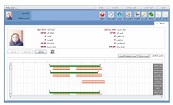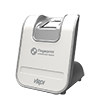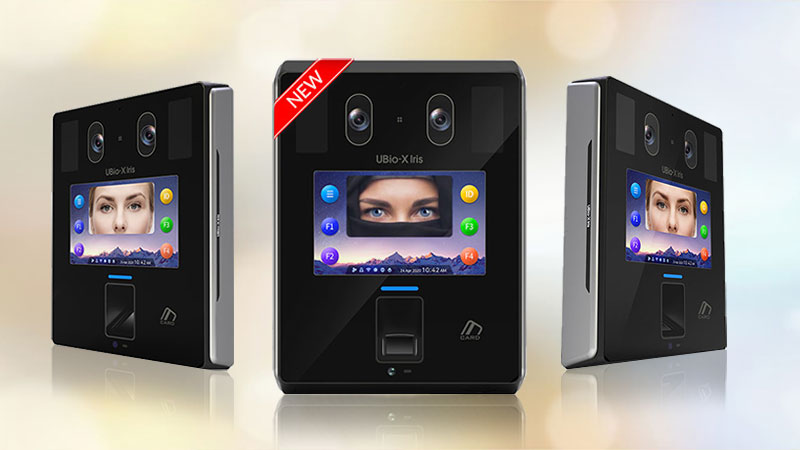Today, many characteristics are used as biometrics in real-world applications, the most important of which include faces, hand veins, fingerprints, palm prints, iris, and voice patterns.
Iris Recognition Biometrics
Iris recognition is the automatic process of biometric recognition that uses mathematical pattern-recognition algorithms on still images of a person's eyes, whose facial patterns are highly distinguishable and stable that can easily be spotted from a distance. This technology will surely increase the accuracy of biometric authentication systems and make them more practical and valuable. Retinal scanning is performed with another ocular-based biometric technology, which is often confused with iris recognition. Most of the time, biometrics used in iris recognition applications are extracted from physical access control displays.
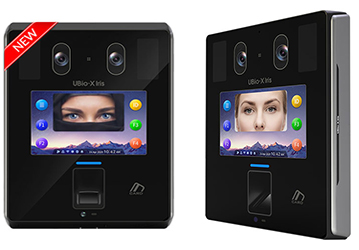
UBio-X Iris Time and Attendance Device
Iris Recognition Systems
Iris recognition system uses video camera technology in access control solutions, providing subtle infrared illumination to capture details rich in the iris' intricate structure visible from the outside. Digital templates that encode these patterns into mathematical and statistical algorithms provide someone to pretend to be an individual. Iris recognition allows security and law enforcement agencies to identify individuals in real-time without the need to capture or record electronically.
Researchers at Carnegie Mellon University in the US have shown they could use a computer program to identify a driver by taking a picture of his eyes from his vehicle's side mirror. The latest development in this field is developing a real-time iris recognition system (IRIS) by the University of California, Berkeley.
Biometrics are considered highly secure for the identification of individuals as they are distinctive. Furthermore, it is challenging to be forged. Moreover, biometrics are very convenient in their usage because they can't be stolen or forgotten somewhere. The main usage of biometrics within smart projects is mainly related to data access control, i.e., through the checking of biometrics, some users can be granted or denied access to the protected service or information. It is a general belief that the usage of biometrics is the perfect solution for all identification problems.
An iris has a texture, which is randomly determined in the embryonic stage and fingerprints. Iris textures have been used as a human identifier for some time now. They are considered one of the most reliable ways to distinguish a human from another. It is considered one of the most reliable because it is an internal and practically invariant organ for a lifetime. It is a flat organ, and its diameter changes only with the pupil's contraction and dilation. It is recent biometrics. It is already being used in various security systems worldwide, such as the United Arab Emirates, Amsterdam Airport Schiphol, Canadian Air Transport Security Authority, etc. Market researchers have predicted biometric smartphones will reach 100% adoption by 2020, and the recent Samsung smartphone Galaxy Note 7 is already featuring biometric iris recognition to market.
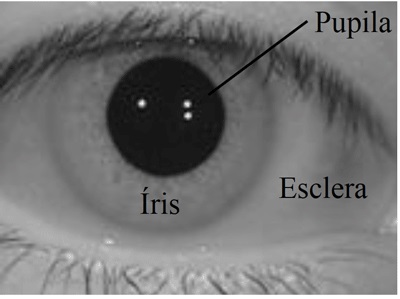
The above image shows the parts of the eye that need to be considered when comparing Irises. Another benefit of Iris biometric usage is the distance of capture, making the touch of the reading equipment not necessary. Most equipment operates from 10cm to a few meters. However, this brings difficulty for the verification of biometrics. This distance, which on the one hand, is comfortable, results in an image that requires some processing before obtaining the Iris template. This process usually results in an error during the matching process; another source of error comes from the number of obstacles that may prevent the correct capture of the Iris as the eyelids and eyelashes. Since it may be possible to detect Iris by mistake, a group of students with names Nedjah, R. S. Wyant, L. M. Mourelle, and B. B. Gupta from State University of Rio de Janeiro, Brazil Department of Computer Engineering, In 2017, they presented an article in which biometric details of the Iris are recorded on unique smart cards and the matching of individuals when they are identified and processed by it.
Iris Recognition Uses
- Log in to a system as a biometric password.
- National borders control by identifying Iris as a biometric passport
- Air travel without a ticket
- Access control to the estate such as home, office, laboratory, etc.
- Unlocking the car and preventing theft
- Internet safety; access control to special information.
- Safe financial deals, such as e-commerce and banking.
Advantages of Iris Recognition
- The members of the internal eye are very protected.
- Visible from outside
- Unique due to complexity
- Throughout their lives, they are a constant pattern.
Disadvantages of Iris recognition
- Moving goal
- The effect of eyelashes, lenses, and reflections on it
- Lack of clarity due to eyelid collapse
- Deformation due to pupil size changes
- Radiation should not be visible or light.
- Achieve to goal at a distance of one meter
- Get one goal within one meter.















































